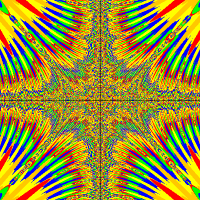2 of the towers i want to work with special attacks (one for slowing down units when they are hit, and the other to do splash damage).
for the splash damage one i figured if i get all the units in a range and damage them then that would work, but it won't let me cast an array, so should i make a loop in there that takes each non empty value of the array and damage it individually, or is there a way to attack them all at once? the way the units spawn now i have the range set to hit 2 of them, and i want it to do damage to them when the attack hits one of them and is removed.
here's the coding i have for the attack:
the commented out part is that original attack that only hits one.
as for the slowing one, since the units that spawn have a different move method then the regular move that you can add an int to, not sure how to slow them down for a few seconds.
public class splashDamage extends towerAttacks
{
/**
* Act - do whatever the splashDamage wants to do. This method is called whenever
* the 'Act' or 'Run' button gets pressed in the environment.
*/
//damage 2/4
//att spd 1/.75 sec
//aoe radius 2 units/3 units (space wise)
int x, y;
enemies e;
int damage;
public splashDamage(enemies E, int Damage)
{
e = E;
damage = Damage;
}
public void act()
{
// Add your action code here.
if(isNotThere())
{
getWorld().removeObject(this);
}
else
{
x = e.getX();
y = e.getY();
moveTo(x, y);
isHit();
}
}
private void moveTo(int x, int y)
{
double xX = x - getX();
double yY = y - getY();
double angle = Math.atan2(yY, xX)*180/Math.PI;
setRotation( (int) angle);
move(1);
}
public void isHit()
{
// if(getOneObjectAtOffset(0, 0, enemies.class) != null)
// {
// //do attack damage
// enemies a = (enemies) getOneObjectAtOffset(0, 0, enemies.class);
// a.decHealth(damage);
// getWorld().removeObject(this);
// }
if(!getObjectsInRange(70, enemies.class).isEmpty())
{
enemies a = (enemies) getObjectsInRange(70, enemies.class);
a.decHealth(damage);
getWorld().removeObject(this);
}
else if(getX() <=0 || getX() >= getWorld().getWidth() || getY() <= 0 || getY() >= getWorld().getHeight())
{
getWorld().removeObject(this);
}
}
public boolean isNotThere()
{
if(e.getWorld() == null)
{
return true;
}
return false;
}
}



